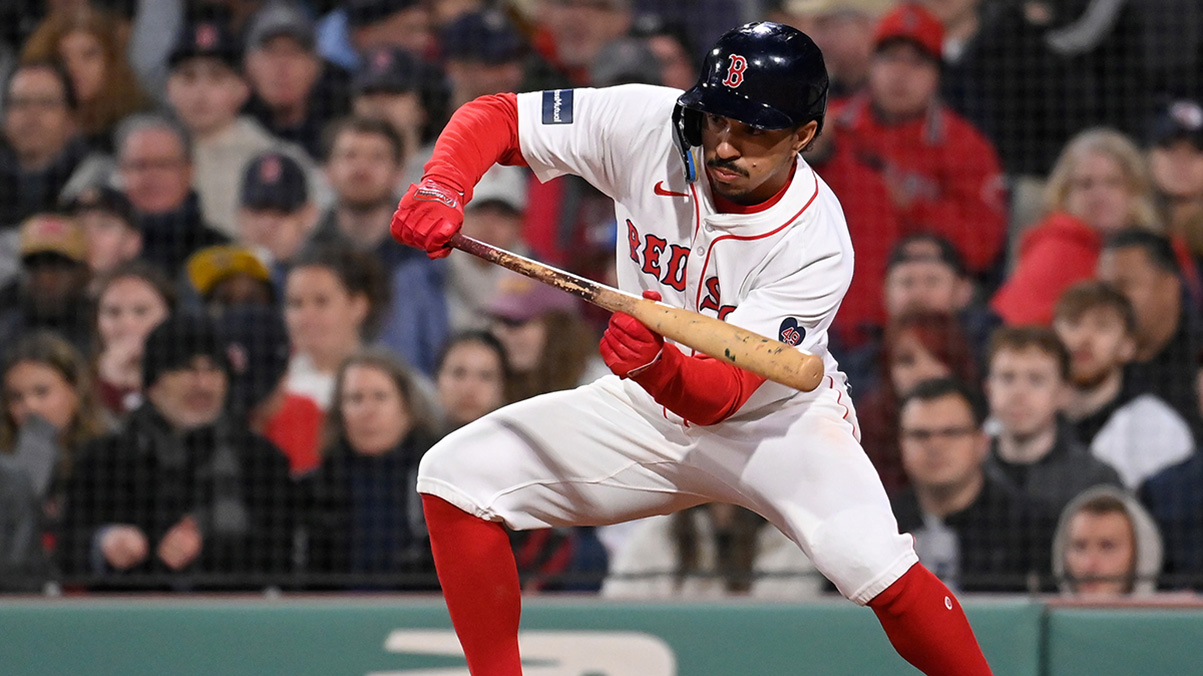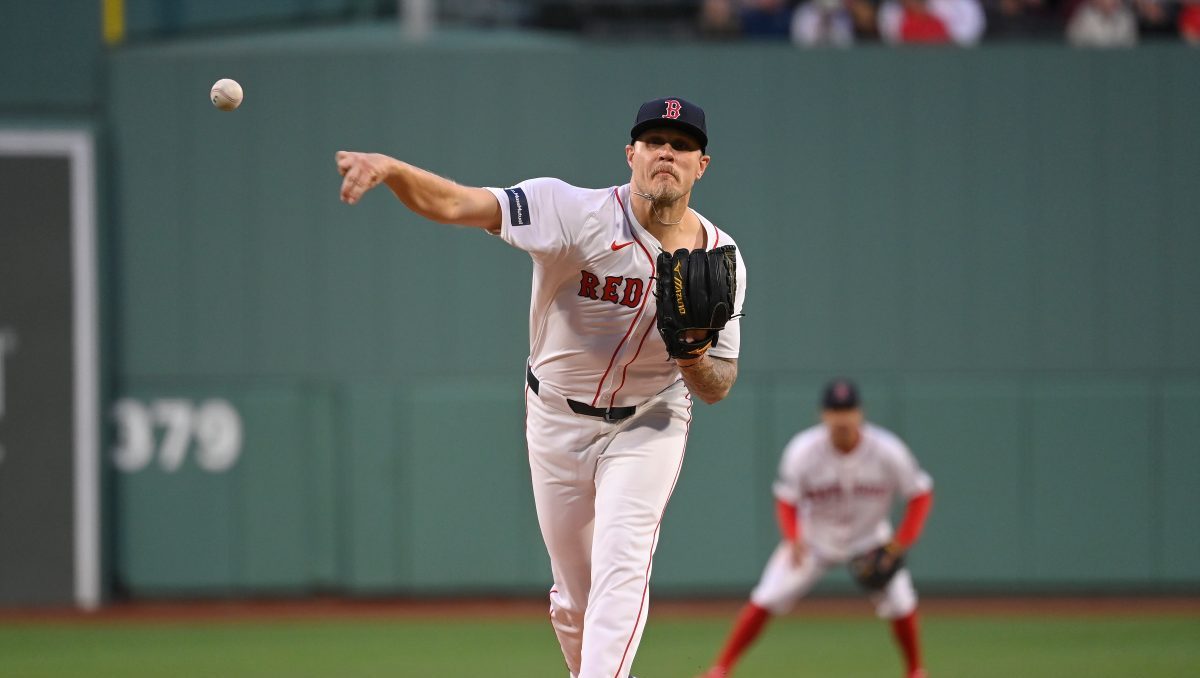BOSTON — Months before he and the rest of Red Sox ownership celebrated on the field at Dodger Stadium, team CEO Sam Kennedy acknowledged some of the uncertainty clouding the future.
Now that the Sox have won under president of baseball operations Dave Dombrowski, any drop-off in the coming years will be hard to criticize. The Sox moved all in, so to speak, and it paid off. Risky as it may have been to focus so heavily on the major league roster in the present — rather than focus on both the present and sustainability for years to come — the ultimate goal was achieved.
“We are all in to try and win a championship this year, there’s no denying that,” Kennedy said at the All-Star Break in Washington D.C. “I think anytime you make a decision for the short term, there has to be a long term impact. The question is, how much did you sacrifice or give up for the long term? And in baseball, you don’t know the outcome. You really — you can’t appreciate decisions that were made sometimes for four or five or six, seven years down the line.
“I do think people are looking at sort of the historic success we’re having right now, and it is a natural question to say, what does this mean for 2020 and 2021? And I want to be clear, we are thinking about that. And we’re focused on it. And we need to be smart as we move forward.”
Once the champagne bottles are swept away, there’s a fork in the road to be discovered this winter.
Most of the 2018 group, the winningest group in franchise history, is intact for next season. Closer Craig Kimbrel may leave as a free agent, and so too may star midseason pick-up Nate Eovaldi. But most of the heavyweights are around for at least one more hurrah.
Chris Sale, Rick Porcello, J.D. Martinez and Xander Bogaerts can all become free agents after this year. Mookie Betts and Jackie Bradley Jr. can leave a year later.
Boston Red Sox
Should the focus now be primarily on one last performance, a finale on the rooftop on Savile Row? Or has the time arrived to start flipping at least a couple pieces that are close to free agency — and perhaps close to peak value — in order to both maintain a dominant club and put the Sox in better position for the coming seasons?
As merely hypotheticals: Extend Betts, trade Bradley for a younger outfielder. Extend Sale, flip Porcello for an arm with more years of control. Losing any key piece from ’18 would be difficult — Bradley and Porcello have been huge for the Sox — but it may be better than to wait until everyone can leave on their own.
Kennedy said that around the office, the Sox discuss “windows” as they relate to certain players.
MORE RED SOX
“But there is a willingness a desire an interest to try and extend these homegrown players that have done such a great job and keep ‘em here,” Kennedy said. “Realistically, we are going to have to make some very difficult decisions as we move forward.”
So far, the indications are the Sox will keep their blueprint the same in ’19. Dombrowski has shown little to no inclination, both in action and interviews, that he wants to modify a formula that, undeniably, worked. But he has stated on this subject, too, that he has an open mind. There’s a lot of time left in this offseason.
How the Sox move through it could determine whether they eventually run into a proverbial wall, where a fuller rebuild is necessary.
“We’ve had the debate and discussion for 17 years about, can the market tolerate or withstand a window of time where you’re not necessarily built to win in October every single year?” Kennedy said. “Our operational philosophy has been — and will always continue to be with John Henry and Tom Werner — that given the support, with the revenues that we have, the ability to sign international players, what we do with scouting and player development, we can be competitive each and every year.
“Now, if you look at our track record in history, there have been years where we made the affirmative decision either at the trade deadline, or otherwise where we’ve recognized we might not have what it takes to go deep in October. We have, a couple times in our history, sold at the trade deadline, made some moves to adjust for the long term. Where we are right now, clearly we’re in a position we hope to do damage in October of 2018.”
Damage was, in fact, done.
“You never know until you get there,” Kennedy said. “The 2019 picture is also pretty clear in terms of players we have either control or under long term agreement. As you start to look out, my job as a member of senior management is to think long term and short term. There are lots of questions in 2020, 2021, 2022, so we need to be very strategic about how we build our roster, how we build our business for those years, and it is something that we think a lot about.
“It’s not as if we’re just all in on 2018 and we’ll see what happens. There are conversations that need to take place with certain players and try to build the way we have with young players and veteran players for that long term. It’s very, very difficult. And teams struggle with it throughout the league. We’re just in a very fortunate position where we do have the fan support to be competitive each year.”
Under Dombrowski, it appeared the Sox shifted philosophies. Former general manager Ben Cherington seemed to always keep a long view in mind, a more holistic approach. But Cherington also struggled to make the best acquisitions from the outside.
In July, Kennedy didn’t think the organization had gotten away from the approach that helped make it so successful in recent years.
MORE RED SOX
"There’s not been a philosophical shift,” Kennedy said. “It’s just the last couple of years, you have seen us recognize a team that we think is built to win a World Series, and add to it by making some deals with minor league assets. That’s undeniable. But hopefully, [amateur scouting director] Mike Rikard and our scouting network will prove that they’ve done a good job to replenish, and you never know what’s going to happen.
“You may find in the next 12-24 months there’s a period of time we decide to make a deal or two to replenish the system. A lot of it depends on what’s happening on the field at the major league level. It’s always a balance, and it’s difficult.”
Such deals have been few and far between in Dombrowski’s time with the Sox. Virtually every notable deal has involved trading away minor league assets for major league talent. An approach that, again, worked. But it does come with a cost, and an eventual dearth of resources, if not replenished. Fans may not care, particularly, until that moment arrives, but the organization does.
This winter, the Red Sox are adding to both their analytics staff and they are making some changes, yet to be totally finalized, to their player development staff as they attempt to once again lead the field in areas besides the 25-man roster.
Some changes have been made already, Dombrowski said, under his watch.
“Put a lot more emphasis on drafting of pitchers and how we would appraise that and made some changes in that regard,” Dombrowski said during the season. “Brian Bannister coming in on a full-time basis, with Dave Bush now. We’ve integrated analytics much more than was done in the past.
“Player development, we have made some changes too. And I would think we will continue to grow, and as we’ve grown at the big league level made some changes, I’m sure that we’ll continue to grow. I wouldn’t get into what those things are, of course.”
But, at least tacitly, Dombrowski appeared to acknowledge a management style focused on immediacy.
“Well, when I first took the job, I can’t say that I had any type of vision where we’d be three years down the road, other than to just say that I was hopeful that we’d be in a position we’d have a very competitive big league club,” Dombrowski said, “with the ability to have a good organization system and be competitive year in and year out.”
He said there wasn’t a specific discussion about payroll when he took the job either. The Sox had the highest in the majors in 2018, and may again in 2019.
MORE RED SOX
“I think our ownership conversations were more that we would discuss that on a yearly basis, and we would do what we needed to do to try to win,” Dombrowski said. “Again, that’s always within reason. I think also we’re in a spot, we have a lot of good players. … But we were in a cycle where some of our younger guys hadn’t reached that specific point. And so we didn’t really set a specific parameter in that regard.”
Offering a slightly different outlook, Kennedy spoke of a five-year plan. Anything beyond that, Kennedy said, and it becomes difficult to predict revenues, costs and so on.
“We also like to look at things under the term of the current CBA and we’ve built our business upon the current CBA and how it lays out with the penalties,” Kennedy said. “It’s important to recognize we don’t know what the economics of baseball are going to look like beyond the current CBA. So we do look at that as a guide for how we’re going to operate.”
The current CBA runs through the 2021 season. Dombrowski's contract runs through 2020. How long the Red Sox’ current success runs is to be seen.
Click here to download the new MyTeams App by NBC Sports! Receive comprehensive coverage of your teams and stream the Celtics easily on your device.


